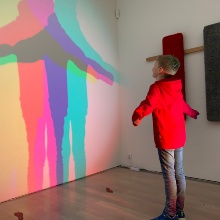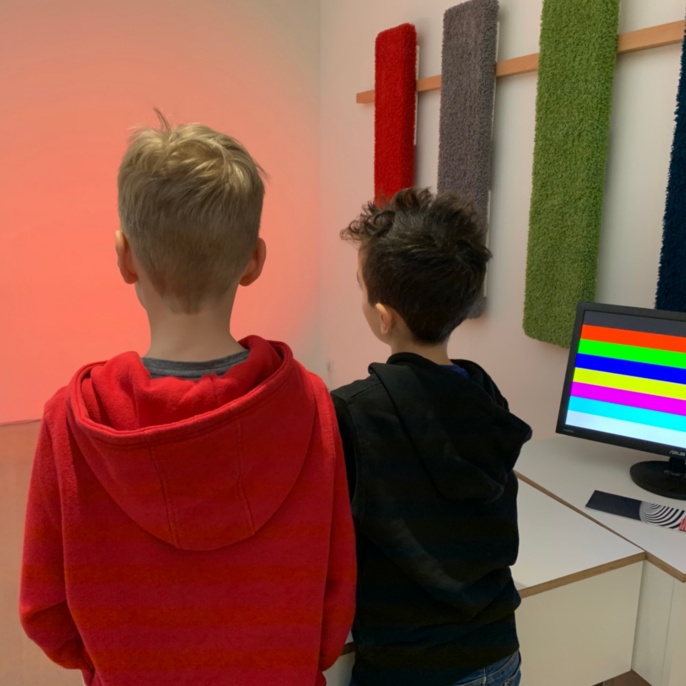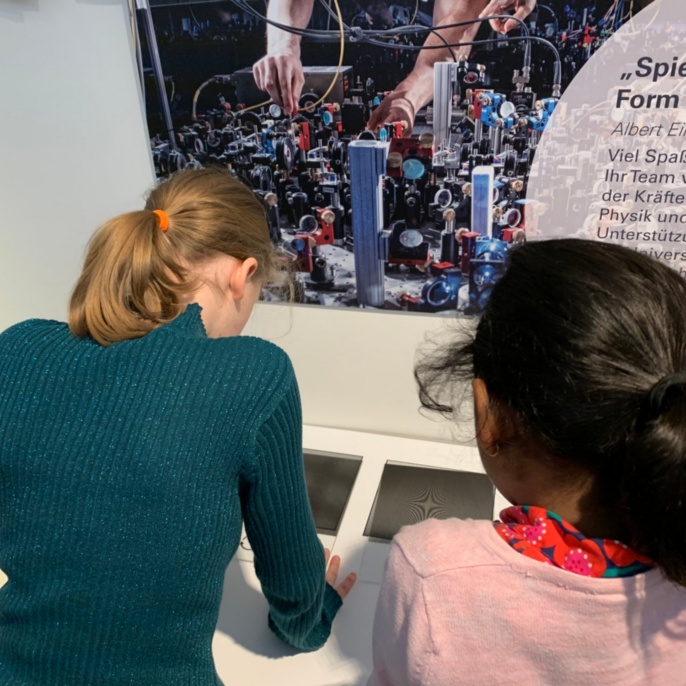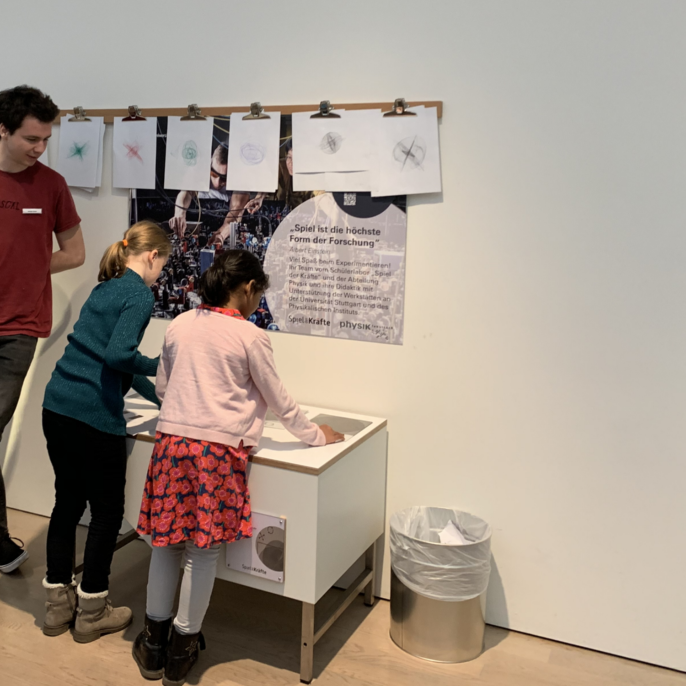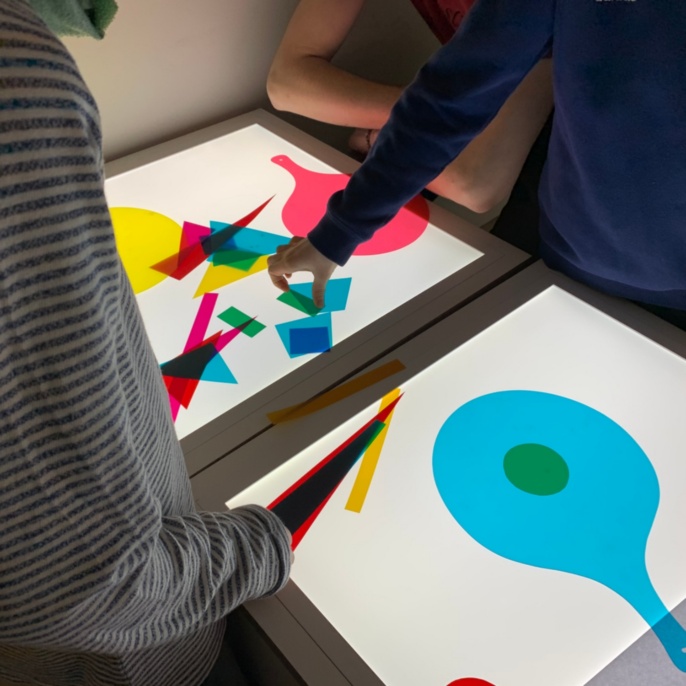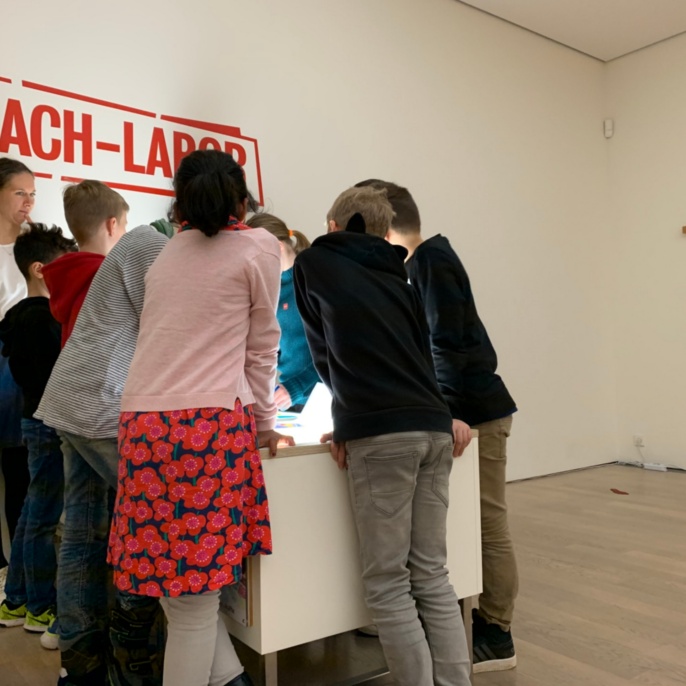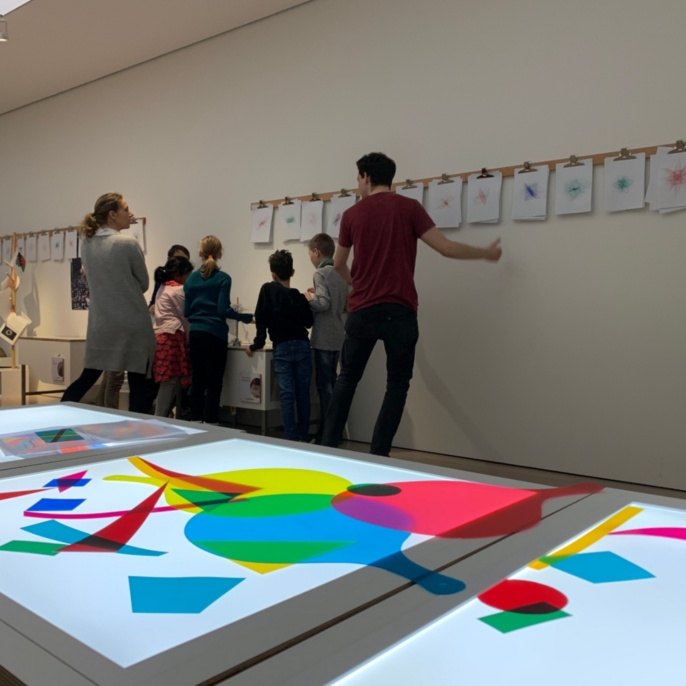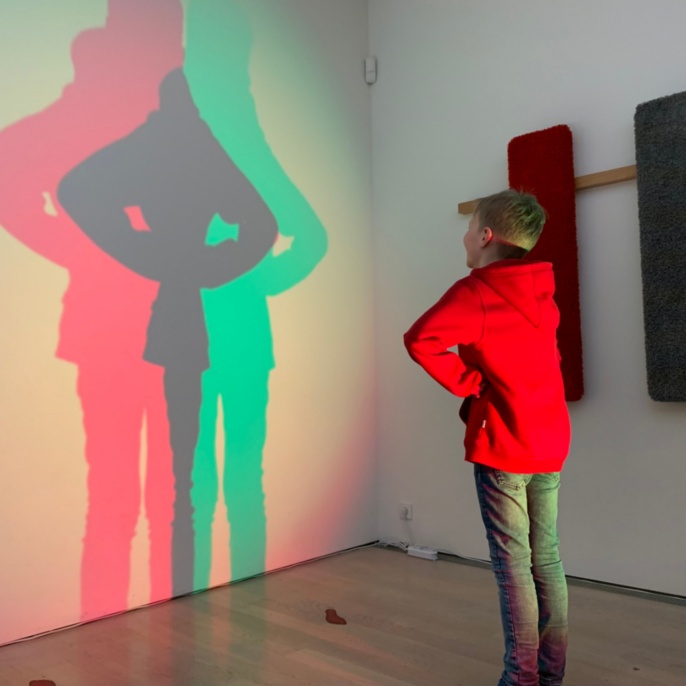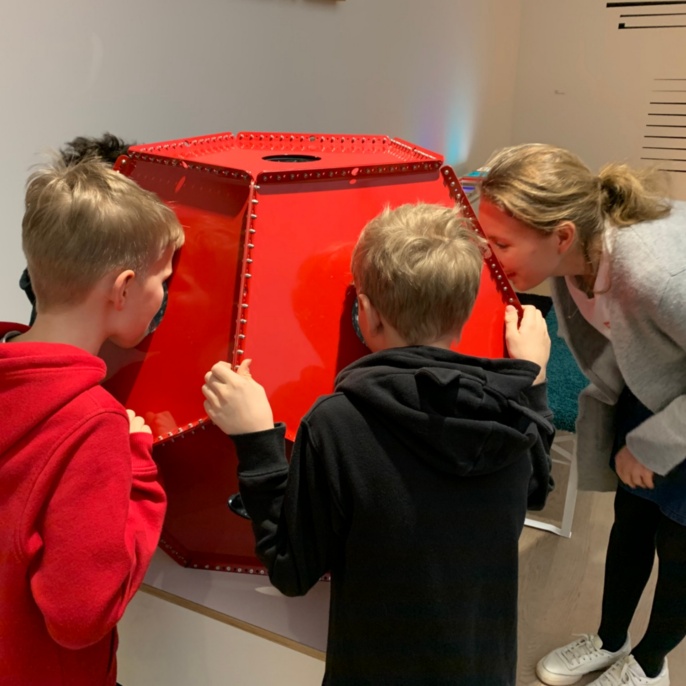Lisa-Marie Hinderer leads a class of schoolchildren into a dark room. From the ceiling to the floor and from left to right, pieces of cord stretch across the room which are lit by black light and which light up white. While the class of fourth graders carefully make their way between the threads, Hinderer advises the children to take a close look at the elastic threads. These move in different directions at the nodal points, meaning that those looking at them lose their bearings and become dizzy.
Dizziness in art
That’s exactly the aim of the artists, whose works are on show in the “Vertigo. Op Art and a History of Dizziness 1520 – 1970” exhibition at the Stuttgart Art Museum. “It’s a very special exhibition”, explains Hinderer. “Vertigo is the medical term for dizziness.” The art student asked the children what dizziness feels like, who answered her by saying that it can sometimes be fun, everything spins around and you get completely confused. They said that sometimes you feel bad though, and in some cases you can get a headache. Hinderer explains that the artists asked themselves where dizziness comes from. They found answers in physics, and so incorporated physical phenomena into their artworks.
Where can you find physics in art?
One piece of art for example reflects a lot of colorful rainbows on the ground. Lisa-Marie Hinderer explains the laws of physics behind this: “Spotlights project white light at rotating prisms. These split the white light into individual colors. The light that we see every day actually consists of all the colors of the rainbow. The artist was interested in how a rainbow is formed. And he recreated it without the need for rain in the museum.” The artwork, called “A Jump into the Rainbow”, goes down so well with the children that one of them even wanted to buy it. That unfortunately isn’t possible, says Hinderer, but anybody can recreate it quickly enough. “Just shine a torch onto a glass body. When you turn the glass body, a rainbow is formed.”
After the tour through the exhibition, the class got the chance to try playing with colors for themselves. In the hands-on laboratory, the Physics Department at the University of Stuttgart set up various stations, such as a light mixer, where children can mix red green and blue colors and create multicolored shadows and a screen which they can paint phantograms on. Two girls for example tried writing their names so that they could read them in a mirrored cone or cylinder.
“What's special about the exhibition is that you see the connection between art and science. When people hear that, they normally wonder what the two have in common. But when they come here and they see the artwork and somebody tells them all about it then they understand the connection, and I think that’s really cool”, says Johannes Schust, who studies Physics at the University of Stuttgart. He helped develop the workshop in the hands-on lab, and explains to the school group which physical phenomena are behind the artworks.
“Art is not just a bubble”, adds Hinderer. “Artists deal with topics like history, music, literature and also science. I find this project exciting in that you can see both of them together. Seeing it on the one hand, but trying it out for yourself on the other hand. I particularly love going into these rooms with the school classes and hearing how amazed they are.”
Overcoming people’s fear
The Op Art-themed hands-on lab is the second cooperation between the Art Museum and the Physics Department at the University of Stuttgart. “We think it’s exciting how you can discover physics pretty much everywhere”, agreed Karin Otter and Robert Löw, who designed the experiments on behalf of the Institute of Physics (5). “I think that you can overcome people’s fear with the interdisciplinary approach. This means you can bring physics to art lovers in a way which is visual and without using any formulae”, says Marc Scheffler from the Institute of Physics (1) confidently. He has been giving “Art and Physics” tours for a number of years, and helped create the concept of the hands-on lab.
In the exhibition for example, you could walk through a room which was alternately lit up in red or blue. In reality though, the walls were green. “Not everybody discovers the secret behind the artwork. Unless they by chance went to the hands-on lab”, reveals Otter. There, visitors can look through colored films at paper cranes and guess what color they are.
Otter believes that the interdisciplinary focus of the exhibition makes it a good opportunity to get talking to people. This is why she is planning other future projects which combine physics and art.


